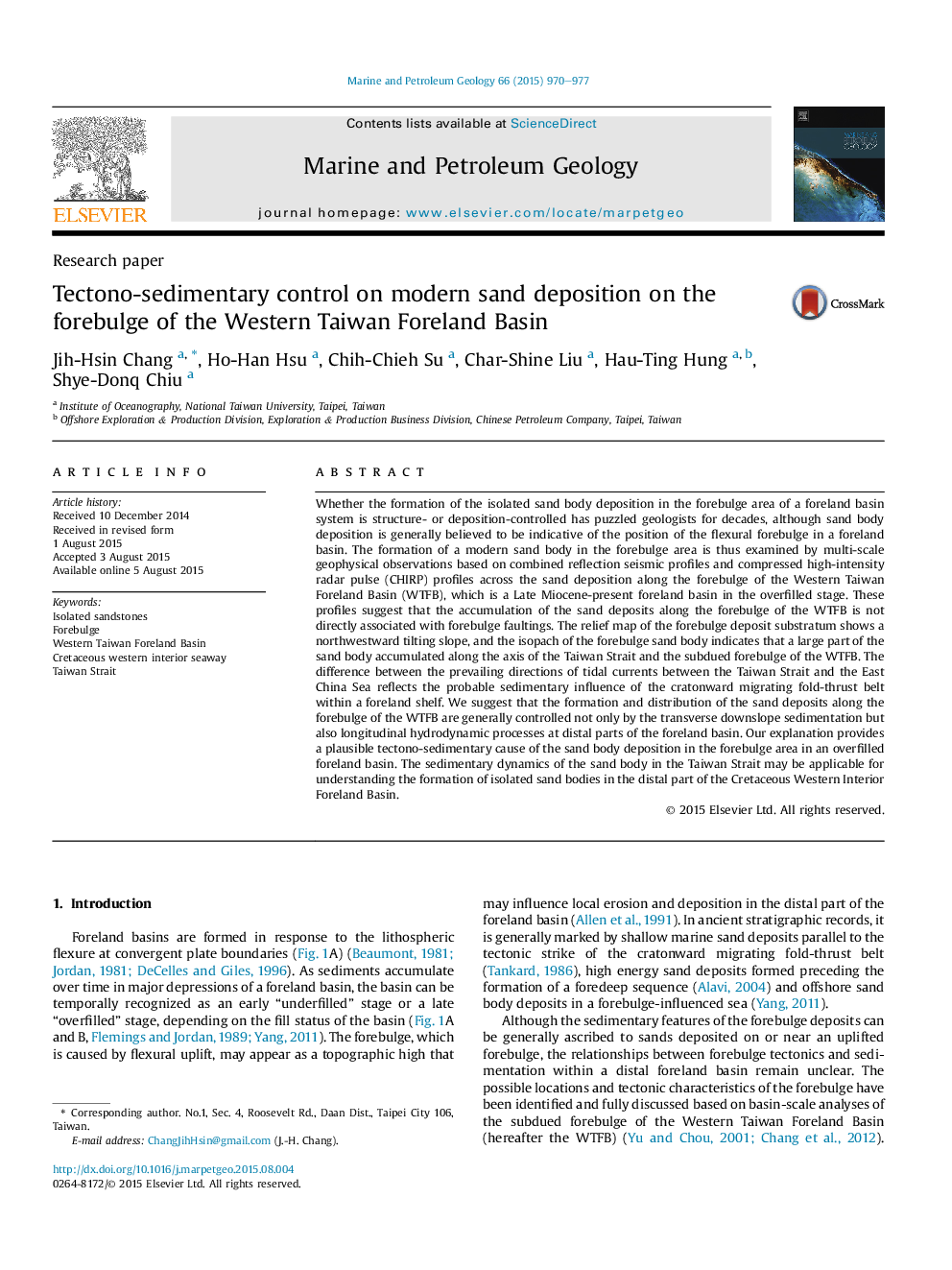| کد مقاله | کد نشریه | سال انتشار | مقاله انگلیسی | نسخه تمام متن |
|---|---|---|---|---|
| 4695502 | 1351610 | 2015 | 8 صفحه PDF | دانلود رایگان |
• Multi-scale profiles across sand bodies upon an overfilled forebulge zone is shown.
• A depositional model for the sand body in Taiwan Strait is proposed.
• This model is applicable for those in the Cretaceous Western Interior Foreland Basin.
Whether the formation of the isolated sand body deposition in the forebulge area of a foreland basin system is structure- or deposition-controlled has puzzled geologists for decades, although sand body deposition is generally believed to be indicative of the position of the flexural forebulge in a foreland basin. The formation of a modern sand body in the forebulge area is thus examined by multi-scale geophysical observations based on combined reflection seismic profiles and compressed high-intensity radar pulse (CHIRP) profiles across the sand deposition along the forebulge of the Western Taiwan Foreland Basin (WTFB), which is a Late Miocene-present foreland basin in the overfilled stage. These profiles suggest that the accumulation of the sand deposits along the forebulge of the WTFB is not directly associated with forebulge faultings. The relief map of the forebulge deposit substratum shows a northwestward tilting slope, and the isopach of the forebulge sand body indicates that a large part of the sand body accumulated along the axis of the Taiwan Strait and the subdued forebulge of the WTFB. The difference between the prevailing directions of tidal currents between the Taiwan Strait and the East China Sea reflects the probable sedimentary influence of the cratonward migrating fold-thrust belt within a foreland shelf. We suggest that the formation and distribution of the sand deposits along the forebulge of the WTFB are generally controlled not only by the transverse downslope sedimentation but also longitudinal hydrodynamic processes at distal parts of the foreland basin. Our explanation provides a plausible tectono-sedimentary cause of the sand body deposition in the forebulge area in an overfilled foreland basin. The sedimentary dynamics of the sand body in the Taiwan Strait may be applicable for understanding the formation of isolated sand bodies in the distal part of the Cretaceous Western Interior Foreland Basin.
Journal: Marine and Petroleum Geology - Volume 66, Part 4, September 2015, Pages 970–977
